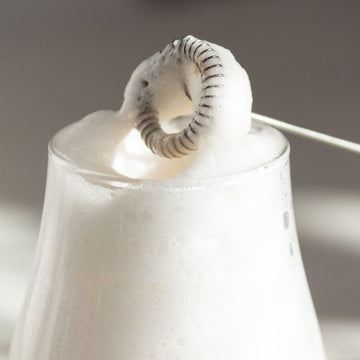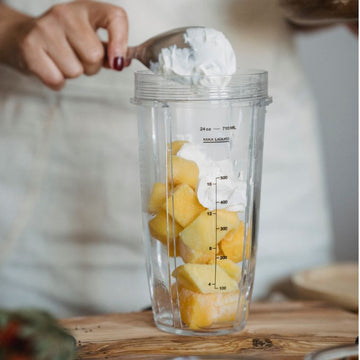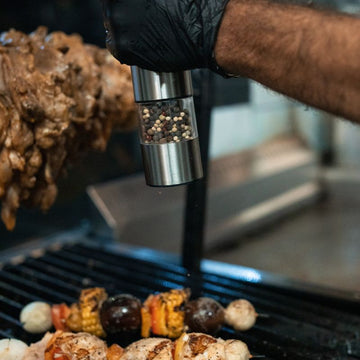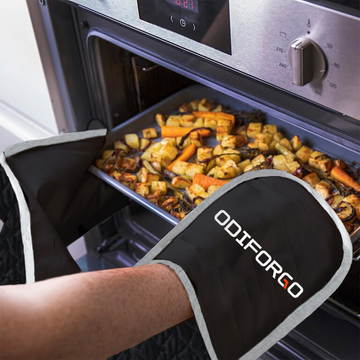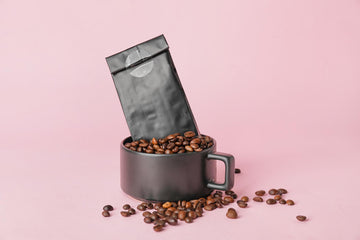Choosing the right coffee beans can transform your espresso from bitter and flat to rich and complex. While any coffee bean can technically be used for espresso, certain varieties excel when subjected to the high pressure and short extraction time of espresso brewing.
The distinction between good and exceptional espresso beans lies in several factors: roast profile, origin, processing method, and freshness. Dark, oily beans might seem like the obvious choice, but modern espresso has evolved beyond the traditional Italian roast. Today's best espresso beans range from medium to dark roasts, with flavor profiles spanning from bright and fruity to deep and chocolatey.
This guide examines what makes certain coffee beans ideal for espresso brewing. We'll explore the differences between Arabica and Robusta, compare single origins with blends, and identify which roast levels work best for different espresso drinks. Whether you prefer straight shots or milk-based beverages, understanding these fundamentals will help you select beans that match your taste preferences and brewing style.
Understanding Espresso beans
Espresso beans vs. regular coffee beans
There's no botanical difference between espresso beans and regular coffee beans. The term "espresso beans" refers to coffee beans roasted and selected specifically for espresso brewing. Any coffee bean can be used to make espresso, and any espresso-labeled bean can be used for drip coffee or French press.
The distinction comes from optimization. Espresso brewing forces water through finely ground coffee at nine bars of pressure in 25-30 seconds. This intense extraction method demands beans that can produce balanced flavors under pressure without becoming overly bitter or sour. Beans marketed for espresso are typically roasted darker than filter coffee to reduce acidity and increase body. They develop oils on the surface that contribute to crema formation.
Filter coffee beans, roasted lighter to preserve origin characteristics and acidity, often taste sour when used for espresso. The short extraction time doesn't allow enough sweetness to develop, resulting in an unbalanced shot. Conversely, espresso-roasted beans can taste flat and bitter when brewed as filter coffee because their darker roast profile overshadows subtle flavors.
Type of coffee beans for Espresso

Arabica vs. robusta
Arabica beans dominate specialty espresso, comprising 60-100% of most premium blends. These beans grow at higher altitudes, developing complex sugars and acids that translate into nuanced flavors. Arabica produces notes ranging from chocolate and caramel to fruit and flowers. The lower caffeine content (1.2-1.5%) results in less bitterness, allowing subtle flavors to emerge. However, pure Arabica struggles to produce thick, persistent crema.
Robusta serves a specific purpose in espresso blending. Containing twice the caffeine of Arabica (2.2-2.7%), Robusta adds bite and intensity. Its higher sugar and oil content creates abundant, stable crema that many associate with quality espresso. Traditional Italian blends incorporate 10-30% Robusta for body and crema enhancement.
The flavor profile of Robusta tends toward earthy, woody, and nutty notes with pronounced bitterness. High-quality Robusta from India or Vietnam can add pleasant dark chocolate notes without excessive rubber or medicinal flavors common in commodity-grade beans. In milk drinks, Robusta helps the coffee flavor cut through, preventing it from being overwhelmed by dairy.
Modern specialty roasters increasingly experiment with fine Robusta, challenging its reputation as inferior. When grown with care at appropriate altitudes and processed properly, Robusta can contribute positively to espresso blends beyond just crema production.
Single origin vs. blends
Single origin espressos showcase specific regional characteristics. Ethiopian beans might present blueberry and wine notes, while Colombian beans offer caramel sweetness with citrus acidity. These distinctive profiles appeal to those seeking unique flavor experiences. Single origins work best as straight espresso or simple milk drinks where their character remains identifiable.
The challenge with single origins lies in achieving balance. One farm's beans might excel in acidity but lack body. Another might provide sweetness without complexity. Seasonal variations affect consistency, and the narrow flavor profile can become monotonous over time. Single origins also require precise extraction parameters, as their lack of balance magnifies brewing errors.
Blends solve these limitations through strategic combination. Roasters might pair Brazilian beans for chocolate and body with Ethiopian beans for fruit and brightness, then add Colombian for sweetness and balance. This layering creates complexity impossible from single beans. Blends maintain consistency across seasons by adjusting component ratios as needed.
Commercial espresso blends prioritize reliability and versatility. They perform well across various extraction parameters and work in both straight shots and milk drinks. A well-constructed blend forgives minor brewing inconsistencies that would ruin single origin shots.
The choice between single origin and blend depends on intended use. Home baristas pulling occasional shots benefit from forgiving blends. Those seeking education about coffee origins should explore single origins. Cafes typically offer both: a house blend for consistency and rotating single origins for variety.
Roast levels for Espresso

Light roasts
Light roasts challenge traditional espresso conventions. Roasted to internal temperatures of 356-401°F, these beans retain maximum origin character and acidity. Nordic-style espresso embraces this brightness, producing shots with tea-like clarity and fruit-forward profiles.
The high acidity requires precise extraction to avoid sourness. Grind finer than usual and extend extraction time to 30-35 seconds. Water temperature should reach 201-203°F to ensure adequate extraction.
Light roasts produce minimal crema and lack the body expected from traditional espresso. They excel as single origin shots for experienced palates but disappoint in milk drinks where their delicate flavors disappear. The dense bean structure demands capable grinders and consistent technique.
Medium roasts
Medium roasts strike the optimal balance for espresso versatility. Reaching 410-428°F internally, these beans develop sugars while preserving origin characteristics. Acidity mellows into sweetness, body increases, and oils begin emerging without dominating.
The extraction window widens with medium roasts. Standard parameters (195-201°F, 25-30 seconds) produce balanced shots. They generate moderate crema with golden-brown color and medium persistence.
Flavor notes span from fruit and floral to chocolate and nuts, depending on origin. Medium roasts perform equally well in straight espresso and milk drinks, making them ideal for home use.
Dark roasts
Dark roasts push boundaries at 464-482°F internal temperature. Beans appear black with heavy oil coverage. The roast character completely overshadows origin, producing uniform flavors regardless of bean source. Bitter, smoky, and charred notes predominate.
These beans extract rapidly due to their porous structure. Coarser grinding and shorter extraction times (20-25 seconds) prevent over-extraction. Temperature should stay below 195°F.
Dark roasts generate abundant crema, though its quality remains debatable. The oils can overwhelm grinder mechanisms and require frequent cleaning. While some appreciate this intensity, particularly in milk-heavy drinks, dark roasts limit espresso's potential complexity.
Freshness across roast levels
Roast freshness affects extraction differently across levels:
-
Light roasts: Peak 10-21 days post-roast, requiring extended degassing
-
Medium roasts: Taste best 7-14 days after roasting
-
Dark roasts: Need only 3-7 days rest before use but stale faster due to oil oxidation
Each roast level demands specific storage conditions. Light and medium roasts stay fresh longer in airtight containers away from light. Dark roasts deteriorate quickly once opened, as surface oils oxidize rapidly when exposed to air.
Top recommended Espresso beans
Classic Italian-style favorites
-
Kicking Horse 454 Horse Power: "This whole-bean coffee is smooth and chocolatey with no bitter taste. It's the perfect crowd-pleaser" at $1.23 per ounce. This Canadian dark roast delivers bold, punchy espresso that works particularly well in milk drinks. The intense flavor profile cuts through dairy without becoming lost.
-
Lavazza Gran Crema: Rated seven out of ten for intensity, this daily drinker performs well "both as a shot and in a milky drink." The Italian heritage shows through in consistent crema production and balanced flavor that forgives minor extraction errors.
-
La Colombe Bleu: A dark roast "that's a touch on the sweet side" with "chocolatey, with cocoa and sweet cream notes." USDA Organic certified and sustainably sourced, though some users report freshness issues when ordering online.
Third-wave specialty roasters
-
Intelligentsia Black Cat Classic Espresso: Their flagship blend since 1995, featuring "sweetness, cleanliness, and complexity" with "notes of cherry, cola, and orange." This lighter approach to espresso roasting showcases origin characteristics while maintaining espresso-friendly body.
-
Intelligentsia Black Cat Analog: "Full-bodied and well-rounded, this blend produces consistently sweet and chocolatey espressos that integrate perfectly with milk." Designed specifically for milk-based drinks while maintaining quality in straight shots.
-
Coffee Bros.: Known for "extremely high-quality blends of 86 – 90pt coffees" and "exquisite and seasonal single-origin and award-winning coffees." Their educational approach helps home baristas select appropriate beans for their skill level.
Premium single origins
-
Balance Coffee Rotate Espresso: Made the top three in extensive testing, featuring "chocolate and berry brownie flavour" with "rich medium-dark roast." Specialty grade beans that work equally well for espresso and filter brewing.
-
Origin Coffee San Fermin: Colombian Tolima beans "roasted in small batches and were speciality-grade." Represents Colombia's organic coffee excellence with consistent quality.
-
Ethiopian and Kenyan single origins offer wine-like acidity and fruit-forward profiles for adventurous palates. These work best as straight espresso where their unique characteristics remain identifiable.
Budget-conscious options
Local roasters often provide excellent value without sacrificing quality. Fresh beans from smaller operations frequently outperform stale premium brands. Look for:
-
House blends from neighborhood roasters
-
Direct-trade offerings from regional companies
-
Subscription services offering discovery samplers
Your espresso journey starts here
Selecting the perfect espresso beans isn't about finding one ultimate choice—it's about discovering what excites your palate and fits your lifestyle. Start with medium roasts if you're beginning, then explore lighter or darker options as your skills develop.
Remember that freshness beats prestige. Local roasters often deliver superior beans at better prices than famous brands. Track what you enjoy—whether it's bright Ethiopian singles or chocolate-heavy blends—and let those preferences guide future purchases.
Your equipment sets boundaries but shouldn't limit ambition. Even modest setups produce excellent espresso with properly chosen beans and careful technique. Each new bean teaches something about your preferences, building your personal flavor map.
The perfect espresso bean exists only in context: your taste, your equipment, your moment. Embrace experimentation without abandoning favorites. With thoughtful bean selection and basic technique, you'll pull shots rivaling specialty cafes. The beans you choose form the foundation—everything else just helps them reach potential.




